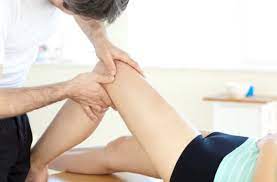Sports injuries are a common occurrence among athletes of all levels. From sprains and strains to muscle soreness and inflammation, these injuries can significantly impact an athlete’s performance and overall well-being. While rest, proper nutrition, and rehabilitation exercises play crucial roles in recovery, massage therapy can be a valuable tool in addressing sports injuries. Here are ten essential massage techniques that can aid in the healing process and help athletes get back on track.
Effleurage: The Foundation of Sports Massage
Effleurage serves as the foundation for sports massage. This technique involves long, sweeping strokes applied with varying pressure along the body’s muscles. It helps increase blood flow and relaxes the muscles, preparing them for deeper massage techniques.
Petrissage: Kneading Away Tension
Petrissage focuses on kneading and squeezing the muscles to relieve tension and improve flexibility. This technique helps break down adhesions and scar tissue, promoting healing and restoring normal muscle function.
Friction: Targeting Deep Tissue Problems
Friction massage involves applying deep pressure and circular motions to specific problem areas. It targets deep tissues and tendons, addressing adhesions and promoting the realignment of muscle fibers. This technique can effectively alleviate chronic pain and improve range of motion.
Myofascial Release: Releasing Fascial Restrictions
Myofascial release involves gentle and sustained pressure applied to the body’s fascia, the connective tissue that surrounds and supports muscles and organs. By releasing fascial restrictions, this technique helps restore mobility, reduce pain, and improve overall athletic performance.
Trigger Point Therapy: Relieving Painful Knots
Trigger points are localized areas of muscle tightness that can cause referred pain and discomfort. Trigger point therapy involves applying pressure to these points to release muscle tension, relieve pain, and restore proper muscle function.
Cross-Fiber Friction: Breaking Down Scar Tissue
Cross-fiber friction targets scar tissue and adhesions that form within muscles, tendons, and ligaments due to injury. By applying transverse pressure to the affected area, this technique helps break down scar tissue, improves circulation, and enhances tissue healing.
Stretching: Enhancing Flexibility and Range of Motion
Stretching techniques incorporated into a massage session can help lengthen muscles, improve flexibility, and increase range of motion. Dynamic and static stretches can be applied to specific muscle groups to promote optimal athletic performance and prevent future injuries.
Compression: Reducing Swelling and Inflammation
Compression massage involves applying pressure to reduce swelling and inflammation associated with sports injuries. This technique improves lymphatic circulation, helping the body eliminate waste products and promote faster healing.
Neuromuscular Therapy: Restoring Balance and Function
Neuromuscular therapy focuses on identifying and treating imbalances in the nervous system and musculoskeletal system. By applying pressure to specific points, this technique aims to restore proper muscle function, alleviate pain, and prevent further injury.
Active Release Techniques (ART): Promoting Muscle Recovery
ART combines massage and movement to treat soft tissue injuries. By targeting specific muscle groups and actively engaging the patient in controlled movements, ART promotes muscle recovery, enhances flexibility, and improves overall athletic performance.
Conclusion
Incorporating these ten essential massage techniques into a sports injury rehabilitation plan can greatly enhance the healing process and help athletes recover faster. It is essential to consult with a qualified massage in Calgary or sports injury specialist who can tailor these techniques to the specific needs and goals of the athlete. Remember, while massage therapy can be highly beneficial, it should always be used in conjunction with proper medical care and guidance.








